The Swiss architect Theodor Cron disembarked in the Peruvian port of Callao on what was almost certainly a grim, gray August day in 1948, the sky over Lima’s Pacific coast bleached a dimensionless white by the perpetual fog of the city’s austral winter. Then, as now, Peru teetered at the edge of crisis and transformation. In October of that year, General Manuel Odría would overthrow the democratically elected, left-leaning president José Luis Bustamante y Rivero, initiating his 8-year dictatorship. The year before, the soon-to-be influential Agrupación Espacio—roughly “Space Group,” a consortium of intellectuals led by architects—published a manifesto insisting on a new approach to the arts, and particularly building, that would bring about “the genesis of a new man and the elaboration of his message.” Modernism had arrived in Peru.
-Archivos-familias-Bindler-y-Cron-01-copy.webp)
Iglesia Luterana, Lima, 1953. Photo courtesy the Bindler and Cron Family Archives
Born in 1921 into a well-off family in Basel and trained in architecture at the prestigious Swiss Federal Institute of Technology Zürich, Cron traveled to Peru in 1948 as part of the mass European migration to the Americas that followed the devastation of World War II. Why, exactly, he chose Peru remains unclear, say architect Johann Schweig and investigative journalist Irene Arce, who published their manuscript on the architect, succinctly titled Th. Cron, on October 7. (By pure coincidence, Schweig begun studying the architect in 2012 and Arce in 2014; they decided to merge their efforts in 2019.) But their research has confirmed that, almost immediately after arriving in Lima, Cron joined a vibrant social circle of painters, photographers, designers, writers, and archaeologists. Determined to live modern lives in a conservative society, they were also, much like their predecessors in Mexico avant-garde several decades earlier (Rivera, Kahlo, O’Gorman et al.), fascinated by the pre-Columbian material culture that colonialism had so brutally suppressed. The chemist and entrepreneur Juan Le Bienvenu, for whom Cron would build a house in 1952—one of the best-preserved of the architect’s more than two dozen residential projects—often took friends to remote archaeological sites on his prop jet while the ethnographer Arturo Jimenez Borja would plan overnight excursions to nearby digs complete with lights and music.
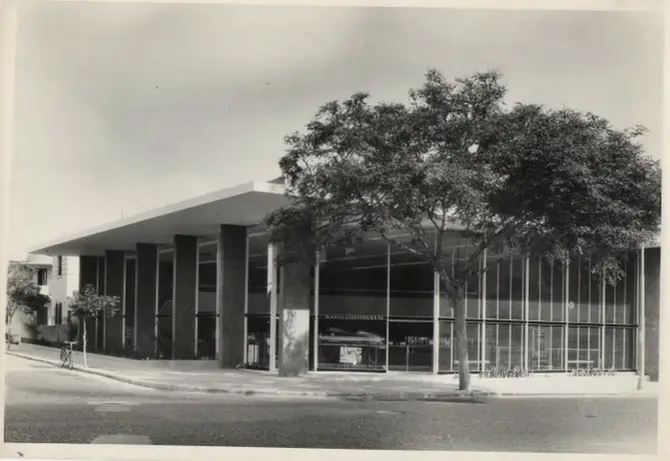
Banco Continental, Lima, 1959. Photo courtesy Mario Bianco Archives
Within a year of arriving in Lima, Cron had built his first project: a block of four duplex apartments conceived as homes for unattached artists—a typology so unusual at the time that the project’s builder had to justify its validity to the municipality in order to obtain construction permits. That project on Calle Roma in the neighborhood of San Isidro captured, with the clarity and maturity of a more senior designer, many of the aesthetic preoccupations that would go on to define Cron’s output: pure geometries; large windows shielded by wooden screens, which adapted the ingenious box balconies of colonial Lima to the modern idiom; ceramic tile floors that deflected warm light onto whitewashed walls; and a conscientious approach to urban scale. Compared to neighboring houses, which tended to copy colonial motifs as historicist pastiche, Cron “took those same elements and abstracted them,” Schweig says. “He was not a traditionalist,” as architect and historian Markus Breitschmid notes in his essay in Arce and Schweig’s book, “but neither was he a modernist revolutionary, dogmatic and blind to history.”
Over the decade that followed, Cron built at least 35 projects in and around Lima that deepened and amplified the explorations begun in the building on Calle Roma. Staggered volumes unfurled against a backdrop of arid mountains, like the low-slung skylines of Andean villages. Stone retaining walls and trapezoidal buttresses recalled the forms and materials of Inca construction. Wooden screens and handmade tiles—sometimes, as in the 1952 Peruvian-Swiss Insurance Company building, arranged in geometric patterns reminiscent of the textiles that Cron collected throughout his time in Peru—gestured both to colonial architecture and the living crafts of indigenous communities.
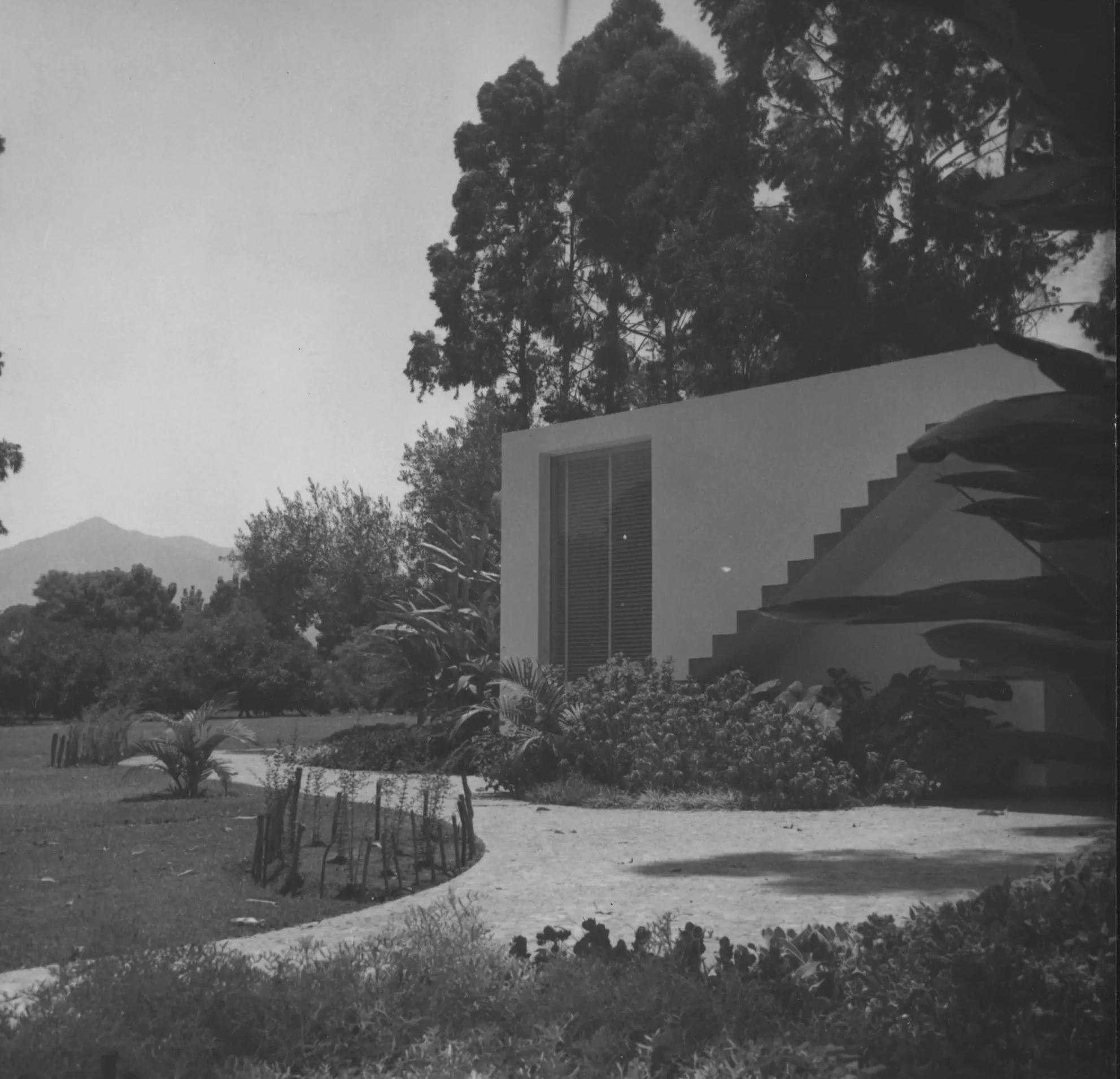
1
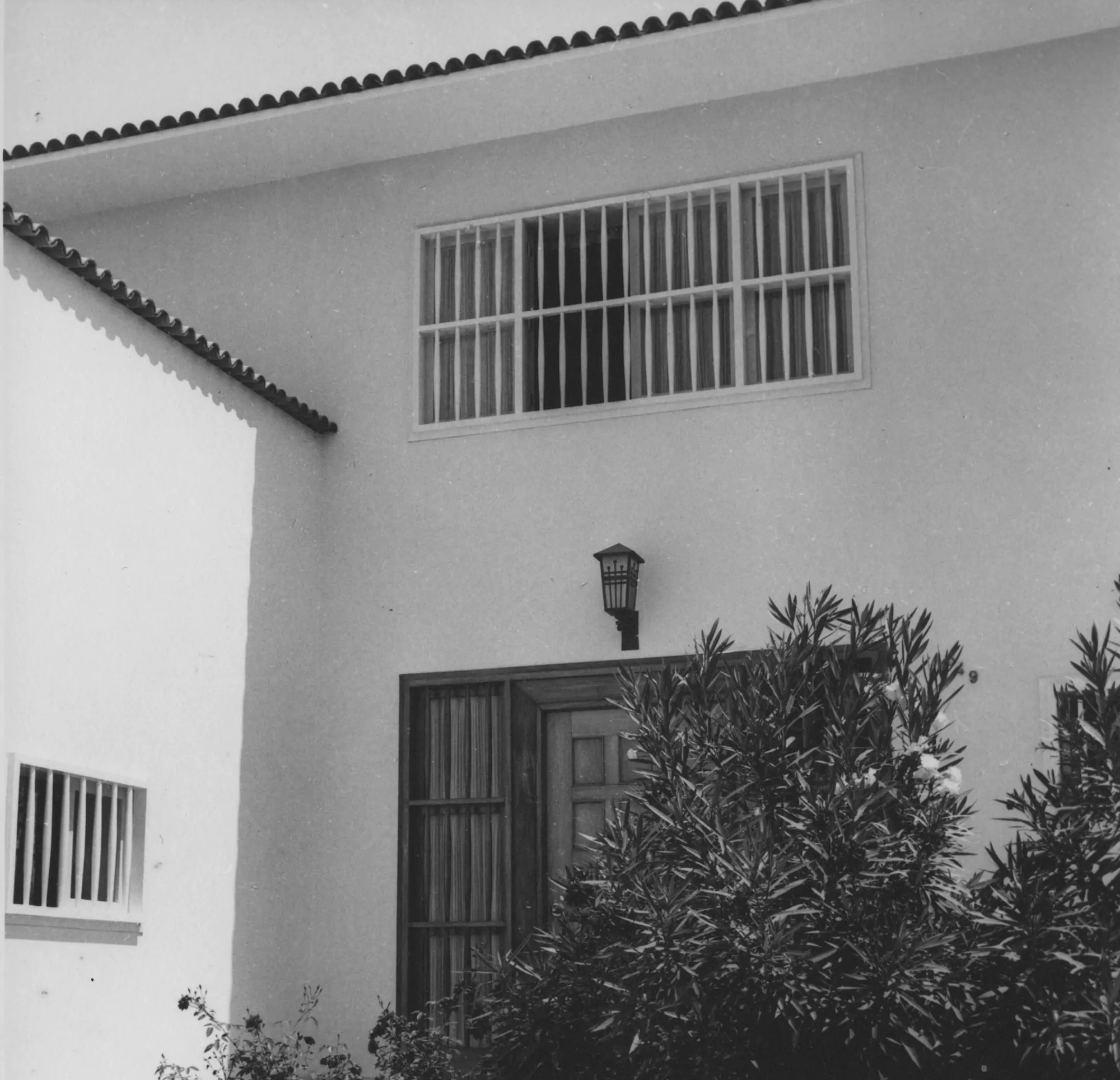
2
Cron's home and studio in Lima, 1955 (1); Casa Ferreyros, 1952 (2). Photos courtesy Bindler and Cron Family Archives
Cron pushed subtly at the boundaries of modernist dogma, playing an essential role in the development of a rooted national Modernism in Peru, much as Alvar Aalto did in Finland and Luis Barragán in Mexico. “Cron is still a model of modernity in Lima, a reference to emulate,” Arce says. Yet his work, most of which has been demolished or altered beyond recognition over the years, is practically unknown outside Lima. Even in his native Switzerland, Cron is barely a footnote, a historical lacuna deepened by the borderline biblical disasters—a fire sparked by a terrorist attack, a flood—that destroyed much of his archives in the last half century.
-Archivo-Municipalidad-de-San-Isidro-copy.webp)
Drawing of Casa Ferreyros, Lima, 1952. Image courtesy Municipalidad de San Isidro Archives
And ultimately, Cron’s time in Peru was brief. In January 1963, his struggles with depression having reached a crisis, he arrived at his sister’s house in the suburbs of Basel, carrying a suitcase stuffed with much of his prized collection of pre-Columbian textiles: the moth-eaten remains of the life he’d built in Lima. He spent that year in and out of mental institutions and, in February 1964, on a family trip to the ski resort of Klosters, took a tranquilizer, boarded the funicular to the top of the mountain, and wandered out into the snow. There, looking out over receding peaks that must have reminded him of Peru’s soaring Cordillera Blanca, he froze to death in the long Alpine night, so near and so far from home.
-Archivos-familias-Bindler-y-Cron-01.webp)
The lobby of Edificio de la Compañía Peruano-Suiza, an office building in central Lima, 1952. Photo courtesy Bindler and Cron Family Archives
TH. Cron, edited by Irene Arce and Johann Schweig and published in Spanish by Mirada Libre, is available for purchase here.


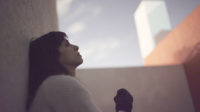
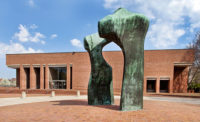
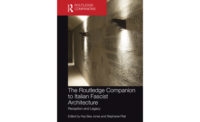
Post a comment to this article
Report Abusive Comment